At the end of last week, my husband finally emerged from under a pile of tests and report cards. So on Saturday we decided to celebrate by going on a hike at Rattlesnake Point Conservation Area.
Located in Milton, Rattlesnake Point is part of the Niagara Escarpment UNESCO Biosphere Reserve and one of Conservation Halton’s eight parks. It was created in 1962 to protect this unique ecosystem that includes sheer limestone cliffs, crevice caves, talus slopes and glacial deposits. The park is also home to a lot of important species, including hackberry tree and eastern white cedar. Contrary to its name, rattlesnake is not one of them. However, the story goes that in the 1800th when a few sailors jumped ship in Hamilton Harbour and came to this area, they reported seeing hundreds of timber rattlesnakes sunning on the rocks. Unfortunately, timber rattlesnakes have not been found in the area since the 1950s but the name stuck.
Rattlesnake Point’s limestone cliffs are one of Ontario’s most popular rock-climbing destinations. Since our rock-climbing experience has been limited to two meagre attempts at a climbing gym, which taught us that rock climbing is way more difficult that it looks, we decided to stick to more down-to-earth activities, like hiking and enjoying beautiful views, although, as you will later see, we couldn’t avoid climbing completely.
It took us a little over 30 minutes to drive to Rattlesnake Point. We paid entrance fees ($6.75 per adult and $5 for our son), found a spot at the upper parking lot, had a snack, added a few more layers since it was rather chilly, and were finally ready for our adventure.
Rattlesnake Point has several hiking trails. There is the 1.5-kilometre-long Vista Adventure Loop and the Buffalo Crag Trail, which is twice as long. Both treks are fairly easy and have several spectacular lookout points. There is also the seven-kilometre-long Nassagaweya Canyon Trail that leads all the way to Crawford Lake Conservation Area. Since it was already late in the day and it gets dark early in November, we decided to leave that hiking adventure for another day.
After a short walk through the woods, we were at the Pinnacle and Nelson Lookouts. The beautiful Lowville Valley with its patchwork of farms lay down below with Mount Nemo and Lake Ontario in the background.
There were several interpretive panels at the Pinnacle Lookout explaining geological and natural history of the area. We discovered a hackberry tree, a Carolinian species that is at its most northern location in Halton. What we found most unusual about the tree was its bark with intricate patterns of grooves and ridges.
A staircase took us down to the base of the cliffs, where we could admire them from down below and, of course, try a bit of climbing.
The rocks, which usually create an impression of being strong and hardy, showed a lot of signs of weakness upon close inspection: cracks, indentations, water seeping through, trees and plants springing out of nowhere, traces of history etched into their surface.
Once we got back to the top of the cliffs, we continued along the trail. The forest was still, caught between two seasons, devoid of its glorious fall garments, waiting for the winter cover.
Along the way, we came across several attempts at wood shelters, and our son told us about his shelter building experience at Camp Kawartha the previous year.
Eastern white cedars were lining the edge of the cliffs, their roots firmly intertwined with the rocks. Some of these trees are apparently over 500 years old. Talk about strength and hardiness! Our son found some cedar bark and rubbed it between his palms releasing the most wonderful smell. He then explained that it is a great fire-starter.
Once we reached the Buffalo Crag Lookout, we retraced our steps back to the parking lot, our walk punctuated with frequent stops to enjoy the views and peer into cracks and crevices.
Before leaving the park, we turned back to cast one last look at the forest. Remnants of day light were trying to escape through a narrow crack between the land and clouds. Trees, completely bare of leaves, looked exposed and vulnerable in their nakedness.
“It smells of winter,” our son said.
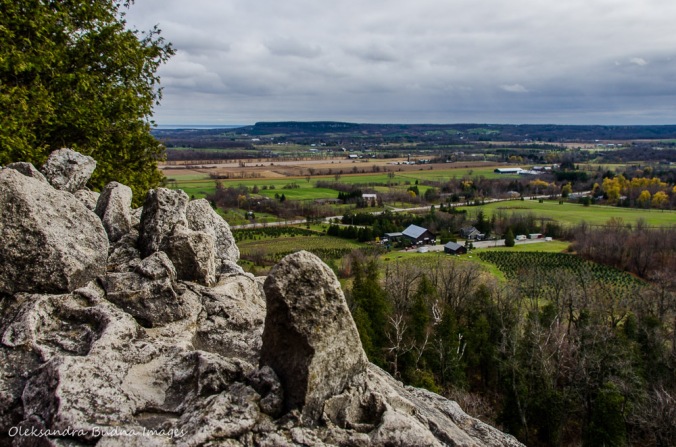

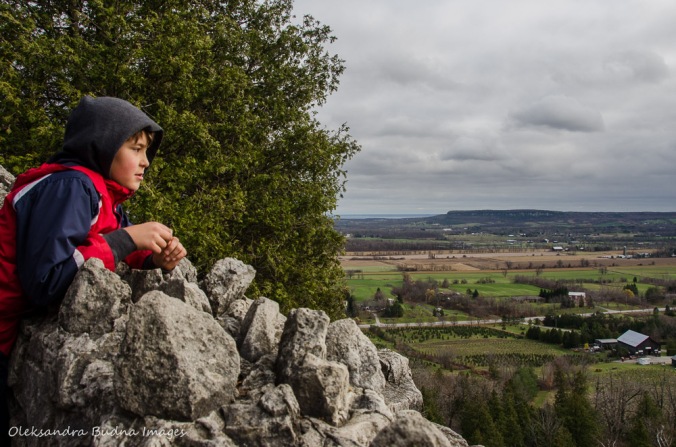
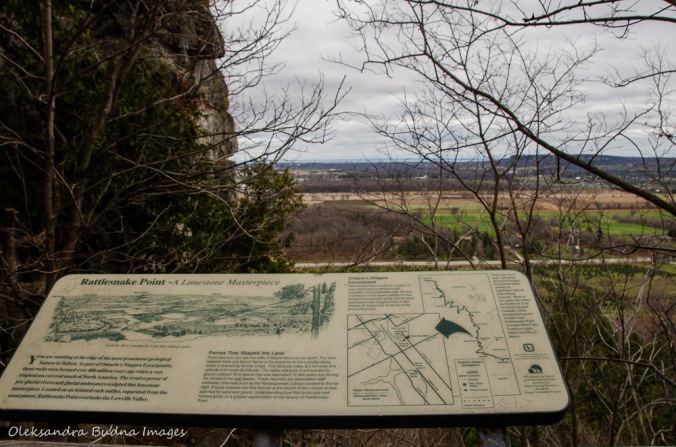
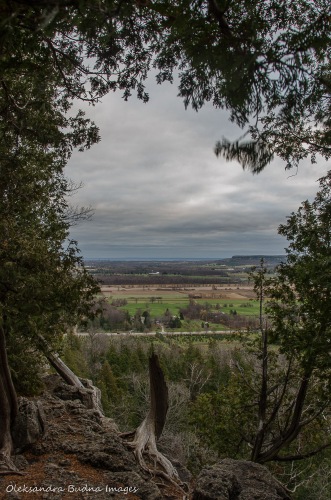
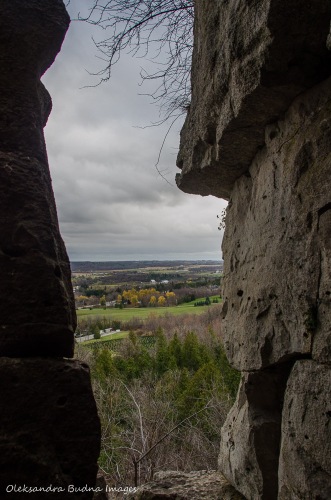
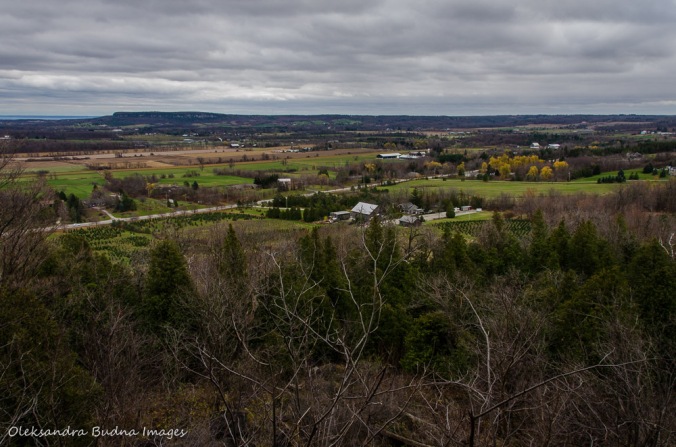

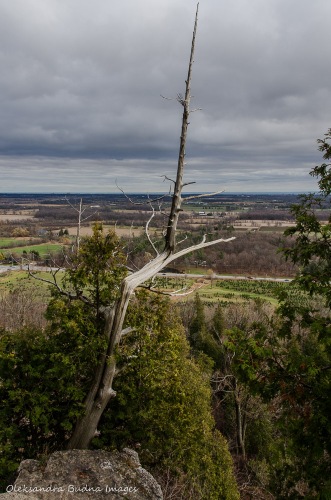
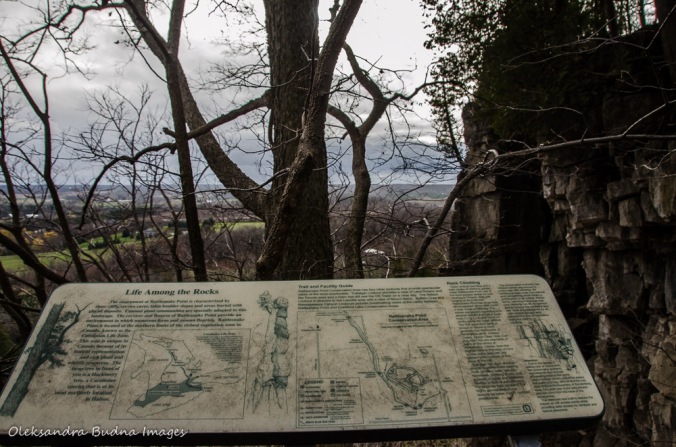
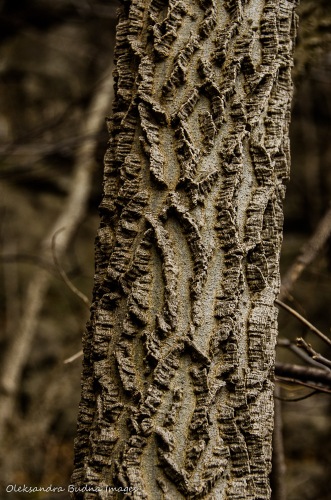
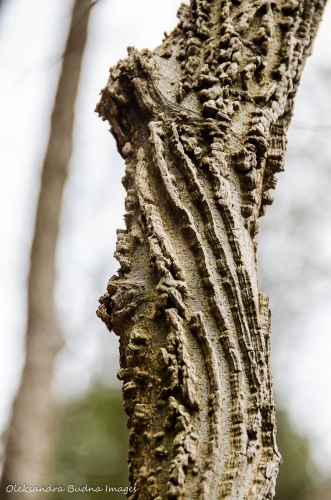
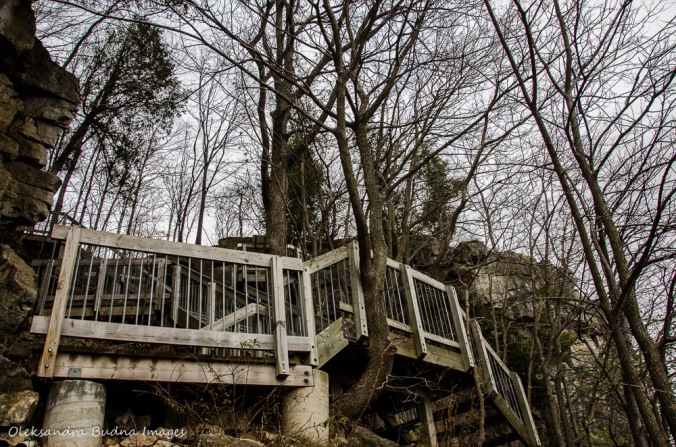
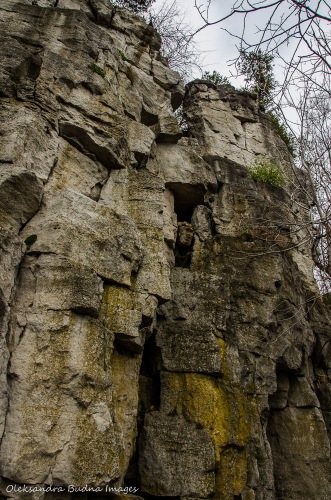
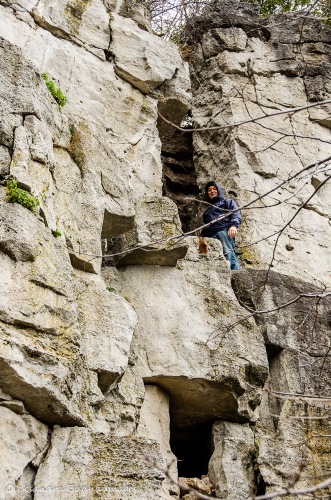
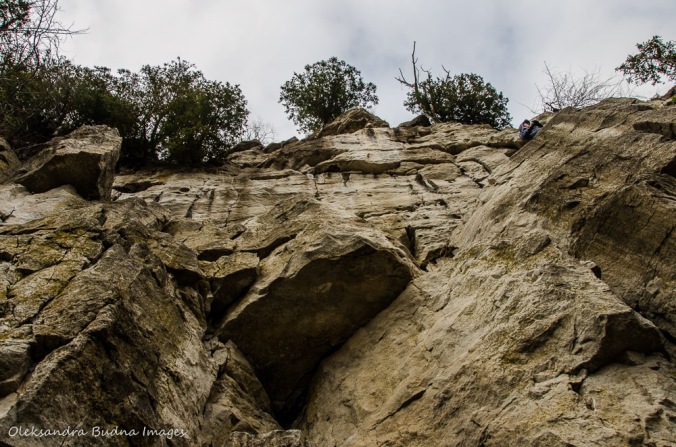
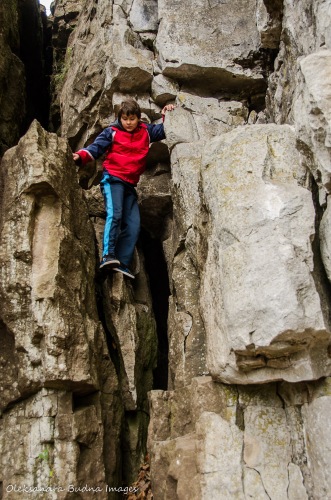
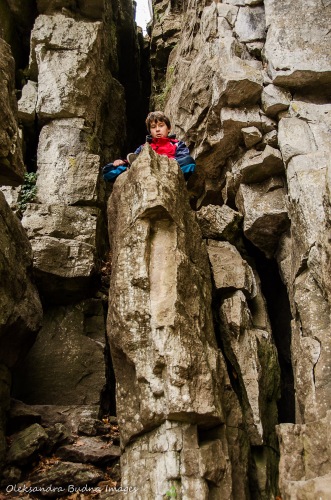
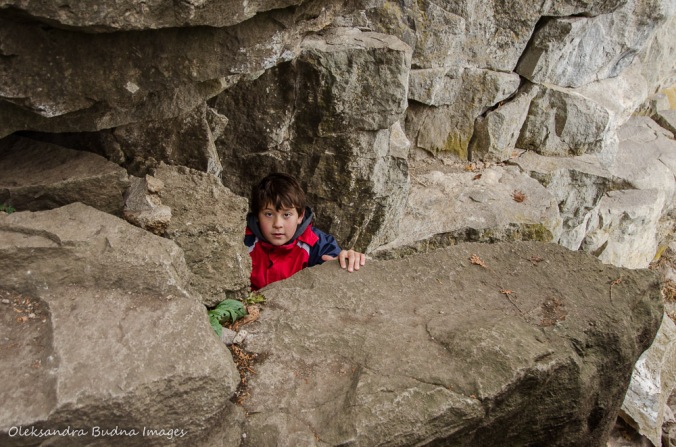
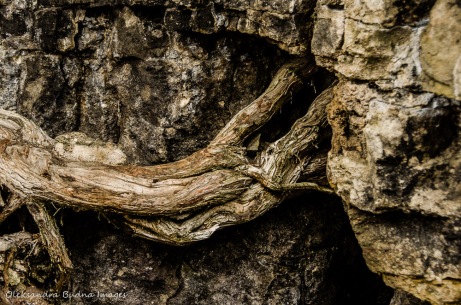
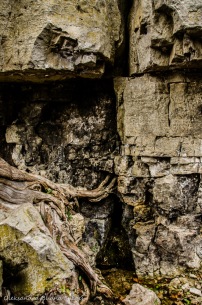

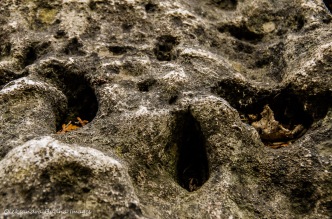
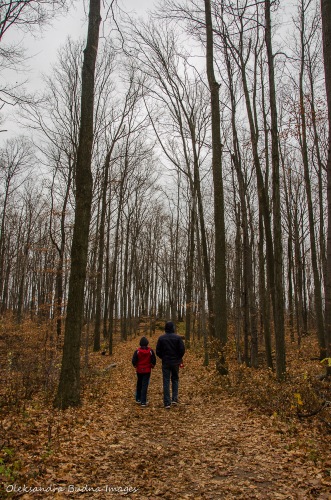
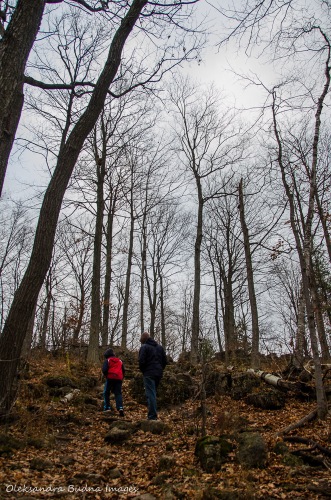
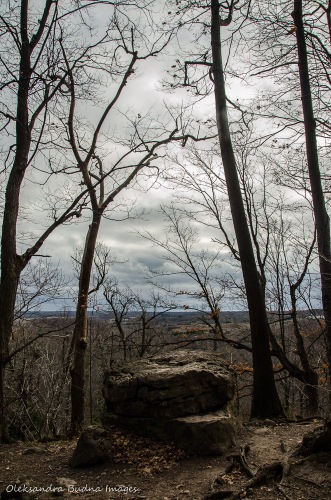
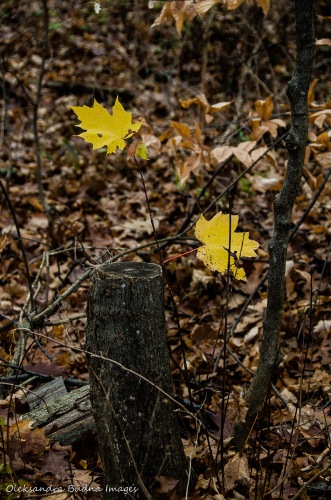
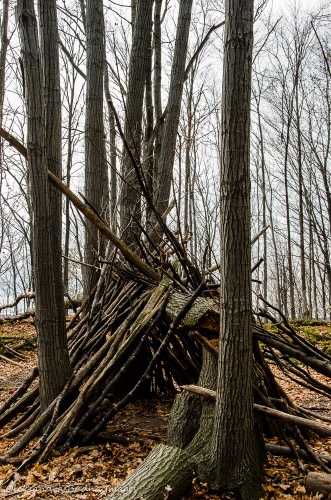
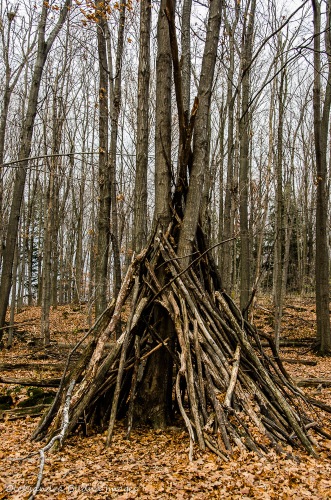
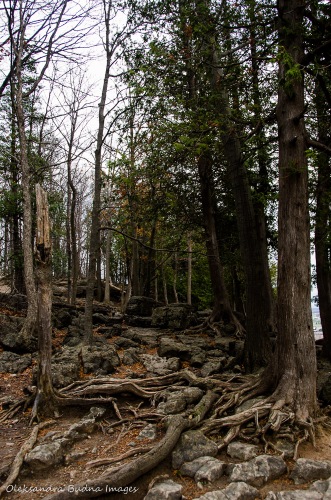
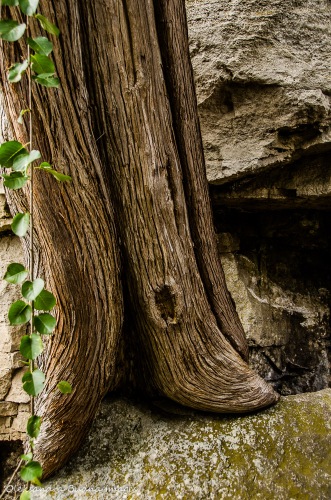

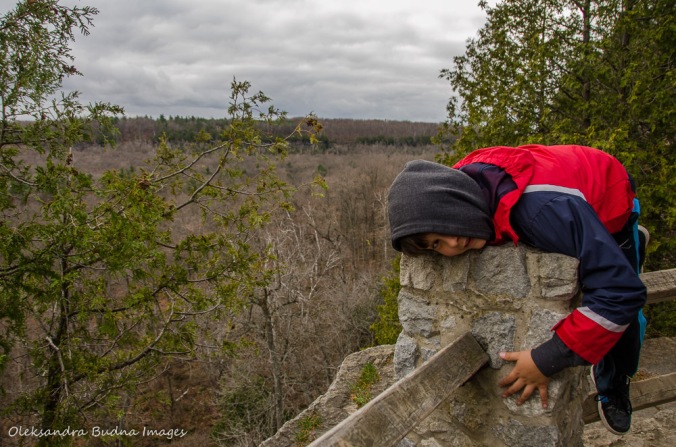
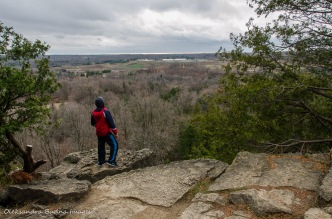
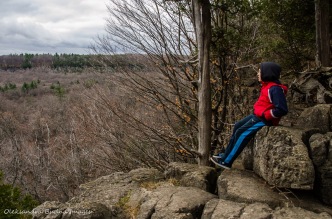
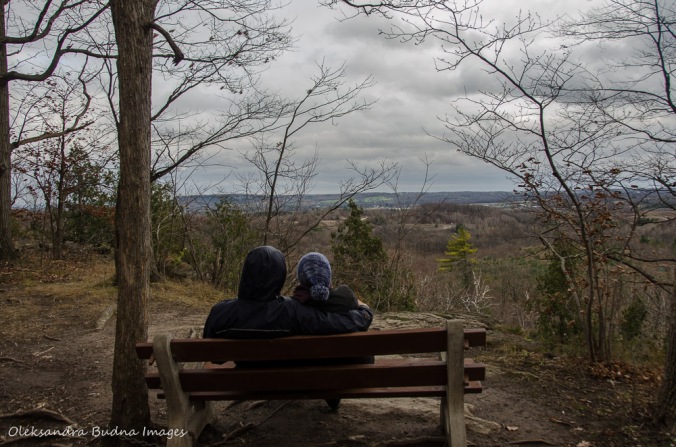
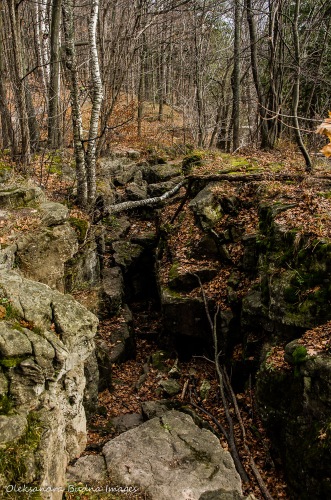

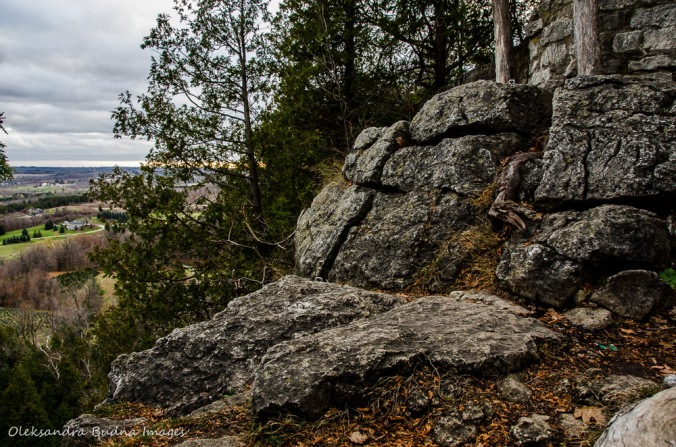
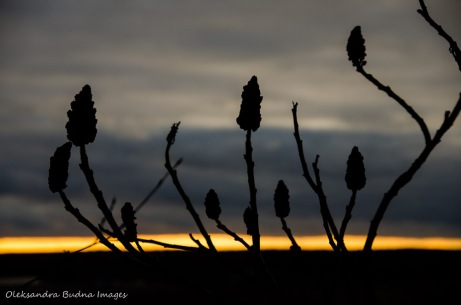
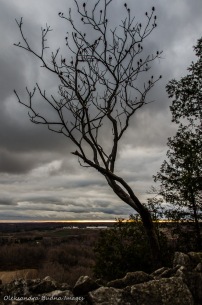
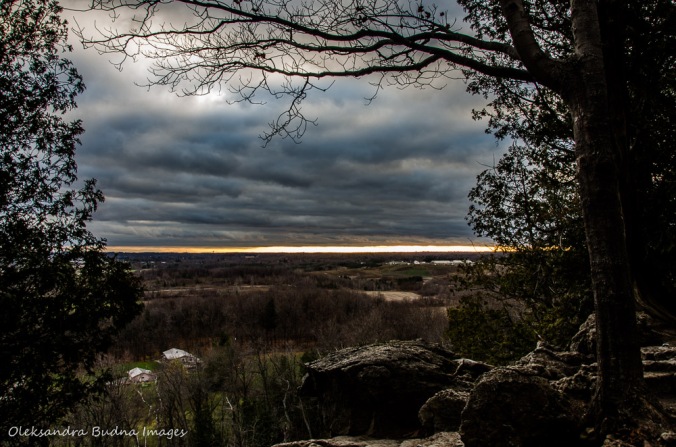

Looks like such a beautiful place, I really enjoyed seeing your pictures of it. Thanks for sharing I know I’m going to enjoy perusing your (like minded) blog 🙂
LikeLiked by 1 person
It was a great little adventure. Thank you for reading and commenting, and, of course, thank you for the follow! It’s always great to share adventures with like-minded people.
LikeLiked by 1 person
We love Rattlesnake Point! I am always amazed at how ancient those cliffs and some of the trees really are. In summer, you get a great view of Turkey Vultures soaring on the thermals created by the escarpment.
You should definitely return to do the hike to Crawford Lake – another favourite spot of ours. Or, just come and spend a few hours at Crawford Lake to soak in the history of the Native Village. Thanks for sharing your great photos and story. I always enjoy reading another perspective on one of my fave places.
LikeLiked by 1 person
It is a special place indeed. In our pursuit of remote places, we often forget that there are lots of great spots right in our backyard. Although we have been making up for it in the past month.
I visited Crawford Lake a few years ago as a volunteer with one of my son’s field trips. It was a great trip even if a bit loud. It is always heart-warming to see kids connecting with nature and each other. But we will definitely go back to hike the Nassagaweya Trail and explore Rattlesnake Point and Crawford Lake a bit more. Looks like a great place for snowshoeing and skiing.
Thank you for stopping by and commenting!
LikeLike
Seems very peaceful! And may I say, I just love the next-to-last photo. The sky and sunny horizon are majestic!
LikeLiked by 1 person
Thank you! It was very quiet. Fall comes with many advantages, including smaller crowds. I like that photo too. It was overcast all day but closer to the sunset a thin strip of sunlight appeared on the horizon. It was quite magical!
LikeLiked by 1 person
An impressive place for a walk.
LikeLiked by 1 person
It was very beautiful. This was our first visit to this conservation area and I am sure many more will follow. Thank you for reading and commenting!
LikeLike
A pleasure.
LikeLiked by 1 person
Fantastic pictures. Rattlesnake point is lovely, I hear they have year around camping options there.
LikeLiked by 1 person
They do. Although from what we saw most of the campsites are pretty open, close to the parking lots and not very cheap. The cheapest ones are $50 a night and can accommodate up to five people. Ontario Parks are still cheaper, at least for now. Rattlesnake Point could work as a camping destination for a quick trip since it is so close and during quieter seasons when crowds get smaller.
LikeLike
The hackberry tree trunks are very interesting! I would have loved exploring the limestone cliffs although as you say they are not very stable. We have some smaller ones in my regions and they crack and crumble easily. I’m always drawn to the way tree roots push their way through rocks. I think there is beauty in that in between season stage of the landscape – the bare skeletal trees and the leaf carpet have a very moody atmosphere. I love your son’s comment, “It smells of winter.” Your pictures are always stunning and make me want to visit these places.
LikeLiked by 1 person
Thank you for your wonderful comment! Yes, those hackberry trees looked pretty cool, especially the younger ones. The grooves didn’t look as deep on the older trees. It’s almost as if their bark stretches out as the trees grow, unlike humans with their ever deepening wrinkles 🙂 Judging by the fact that a lot of people use those limestone cliffs for climbing (we saw lots of permanent anchors in the rocks), they are pretty stable but, of course, they are no match for water, tree roots, wind and time. Trees growing out of rocks always fascinate me too. Requires so much tenacity, will to live and ability to adapt. And yes, there is something special about the end of fall. Once most of the colours are gone and we move into a monochromatic season, I feel like shapes and lines become more prominent and fascinating.
LikeLiked by 1 person
Lovely photos, I really like the rocks and tree roots, they look pretty amazing. Looks like you had a great trip.
LikeLiked by 1 person
Thank you! It was a fantastic little adventure! We found those trees growing through and around rocks pretty fascinating as well.
LikeLiked by 1 person
Great post with gorgeous photos!!!! I love the title, reminds me of one of mine! haha. I forgot how awesome this place was. I will have to get out there soon! Thanks so much for the inspiration!
LikeLiked by 1 person
Thank you, Christina! Yes, Rattlesnake Point is quite special. There are so many great places. I just wish I had more time to explore them all!
LikeLiked by 1 person
Such gorgeous photos. I love the macro shots of the bark and the weathered rock: Seeing the details makes for a meaningful experience and even the psuedo-experience of reading about it on your blog.
LikeLiked by 1 person
Thank you for stopping by and commenting! I agree that paying attention to details offers a more meaningful experience. I think we often go for broad landscape shots (and those are important, too), but it is through small details that we get to know the place in a more personal way. To me, landscapes convey the breadth of the place but details bring the depth.
LikeLike
Pingback: Exploring Hamilton Waterfalls: Webster’s Falls, Tew’s Fall and Dundas Peak | Gone Camping
Pingback: Hiking at Mount Nemo and Our First Snow of the Winter | Gone Camping
Pingback: Geocaching at Crawford Lake = perfect birthday celebration | Gone Camping
Pingback: We are going on a treasure hunt: geocaching and hiking at Mount Nemo and Rattlesnake Point | Gone Camping
Pingback: On mental health and snowstorms | Gone Camping